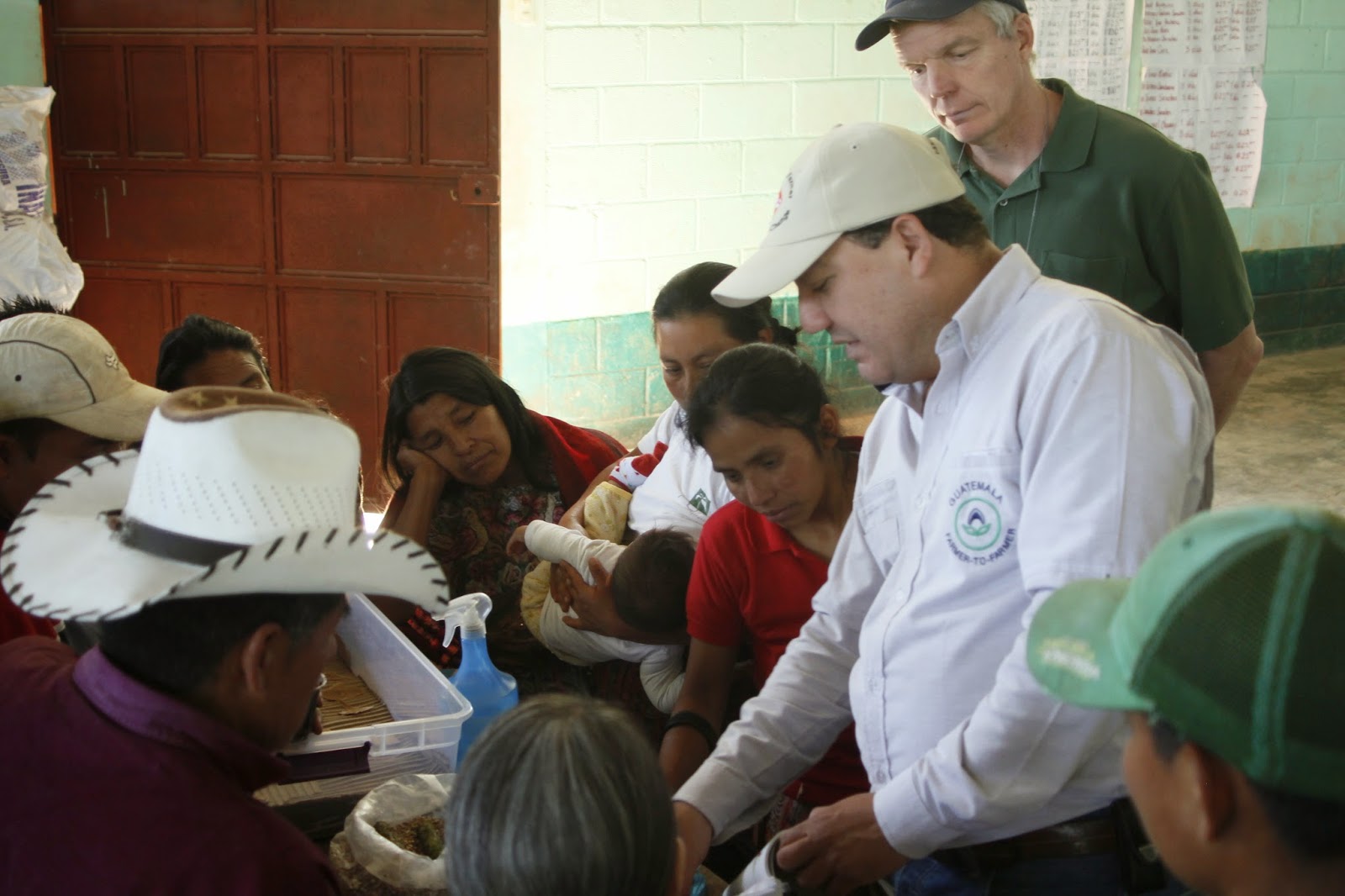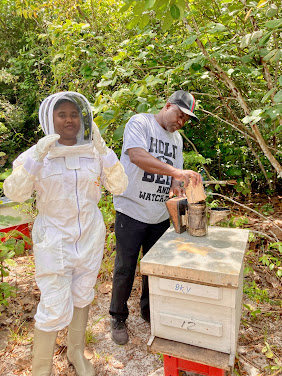Oyster Tacos
 Update from the Field by the Orners
Update from the Field by the OrnersToday the Orner Family, with Farmer-to-Farmer Coordinator Jose Cano's assistance, visited the farming community of Los Angeles, Guatemala. Here we shared our appreciation for their beautiful culture, farming techniques and family unity. After a brief introduction of why we farm, we asked the farmers if they harvest and eat wild mushrooms. They responded enthusiastically saying the best time to harvest champignon is November and December during the Guatemalan rainy season. When presented with the idea of cultivating mushrooms on their own farms, they showed much interest.
Rusty drew the life cycle of the oyster mushroom and invited the group to feel and smell the mushroom spawn. By looking, many mistook the bag as synthetic fertilizer, urea, since the grains of sorghum displayed a milky white substance due to the rapid growth of oyster mycelium. After a deep whiff, all participants were in agreement on the sweet, rich fungal aroma.
Helpful organizations in the past have introduced oyster mushroom growing to the Ixil Region, although the need to regenerate the mushroom spawn on a sustainable basis was requested by the farmers. When looking for a waste carbon source, Rusty introduced corrugated cardboard, spent coffee grounds, and torn burlap bags during his demonstration.
 All farmers went home with two to three oyster mushroom tacos, not to be eaten for dinner that evening, but hopefully to regenerate the spawn to be used in follow-up lessons on growing oysters on local hardwood trees, specifically Quercus virginiana. The taco method involves soaking a sheet of cardboard, 30 by 30 centimeters, in water. Separating the corrugated layer and laying it flat on the table. Next taking a handful of spawn and sprinkling it on the corrugation. Then each farmer slowly rolled it up until reaching the last 3 centimeters. Here the cardboard sides are folded over a centimeter to keep the spawn from rolling out. The oyster taco is placed in an opaque plastic bag and kept cool at 20 degrees Celsius or cooler. Directions were given to mist the taco daily to keep it damp, but not ringing wet. The class learned that this oyster taco will quickly colonize in about one to two weeks.
All farmers went home with two to three oyster mushroom tacos, not to be eaten for dinner that evening, but hopefully to regenerate the spawn to be used in follow-up lessons on growing oysters on local hardwood trees, specifically Quercus virginiana. The taco method involves soaking a sheet of cardboard, 30 by 30 centimeters, in water. Separating the corrugated layer and laying it flat on the table. Next taking a handful of spawn and sprinkling it on the corrugation. Then each farmer slowly rolled it up until reaching the last 3 centimeters. Here the cardboard sides are folded over a centimeter to keep the spawn from rolling out. The oyster taco is placed in an opaque plastic bag and kept cool at 20 degrees Celsius or cooler. Directions were given to mist the taco daily to keep it damp, but not ringing wet. The class learned that this oyster taco will quickly colonize in about one to two weeks.When the cardboard is completely white, simply roll it out, ripping the cardboard into small pieces (3 by 3 centimeter squares). Half of these squares can be placed in a new taco for sustained regen-eration. The other half placed in gashes on fresh cut oak logs which will cultivate oyster mushrooms. The farmer’s excitement, with their new-found knowledge, was very rewarding. When we ran out of cardboard and plastic bags, they willingly ran to their nearby homes and brought back supplies to make more tacos. What fun (lo divertido) to consider – oyster spawn banks on every Los Angeles farm! We shared Tradd Cotter’s organic mushroom book with photos on all steps; it proved worthy in bringing on the airplane flight from Pennsylvania. Our plan is to leave the resource book at the Agros office for Diego and technicians to use for their sustainable mushroom growing.


.png)

Comments
Post a Comment